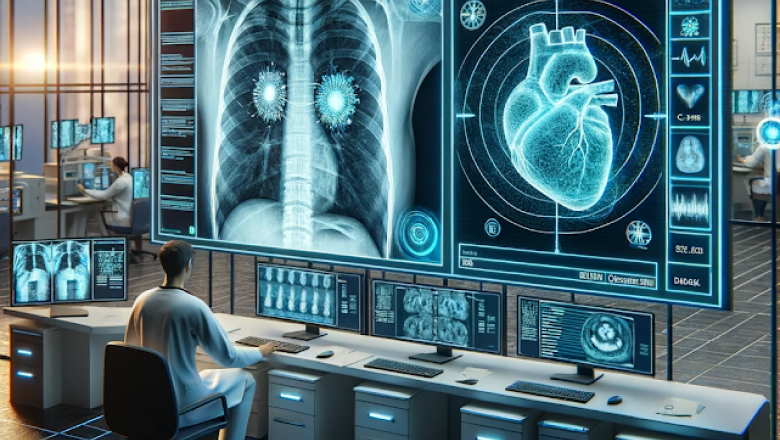
Imagine stepping into a world where medical imaging and artificial intelligence come together. This is the world that Wenting Chen, Linlin Shen, Xiang Li, and Yixuan Yuan invite us into through their paper “Fine-Grained Image-Text Alignment in Medical Imaging Enables Cyclic Image-Report Generation”. These researchers, from top institutions like the City University of Hong Kong, Shenzhen University, Massachusetts General Hospital and Harvard Medical School, and The Chinese University of Hong Kong, have made a big step forward in this field.
Their work introduces us to the AdaMatch model, a new and advanced approach that tackles the challenges of aligning images and text in medical diagnostics. Imagine a tool that can match text with different sizes and positions of unhealthy areas in medical images, particularly chest X-rays (CXR). This is what AdaMatch does. It’s like having a smart guide that can accurately match descriptions in medical reports with the exact areas they refer to in medical images.
Traditional vision-language models (VLMs), which are systems designed to understand and interpret both images and text, have tried to do this before. However, they’ve faced challenges due to the changing and varied nature of medical images. It’s like trying to find a specific tree in a dense forest; the task becomes difficult due to the sheer variety and volume. But AdaMatch tackles this by introducing an image encoder with multiple stages, including the innovative AdaPatch module. This module is key to getting adaptive patches for unhealthy regions in CXRs, enhancing the model’s ability to capture small details and align them with textual descriptions in medical reports.
The validation of AdaMatch is remarkable. In its third stage, the model shows excellent performance in CXR-to-report and report-to-CXR retrieval tasks. Imagine a system that can accurately retrieve the correct medical report for a given CXR image and vice versa. The recall@1 (R@1) score, which measures the model’s ability to retrieve the correct report as the top result, reaches 51.47% for CXR-to-report retrieval and 51.18% for report-to-CXR retrieval. The recall@10 (R@10) scores, which measure the model’s ability to retrieve the correct report among the top 10 results, are even more impressive, with 94.77% for CXR-to-report and 94.60% for report-to-CXR. These metrics indicate a big advancement over previous models.
A key feature of AdaMatch is its detailed cyclic generation process between CXR images and medical reports. This process not only helps in the generation of reports from images and vice versa but also provides a natural explanation for the model’s alignment of the two modalities. For instance, AdaMatch can visually show how each text token from a medical report corresponds to a specific adaptive patch in a CXR image. This alignment is further powered by the use of a large language model, which includes both textual and visual codebooks containing common entities and patches from medical reports and images, respectively. These codebooks are used to extract relevant keywords and key patches to guide the generation process.
The AdaMatch model’s approach to detailed image-text alignment is the first of its kind to adaptively associate image patches with words, greatly improving the explanation of the cyclic CXR-report generation process. The method used in this study is thorough and based on data. Unlike previous methods that depended on predefined patch sizes and positions, AdaMatch dynamically adapts to the changing nature of medical images, capturing a more accurate and detailed view of unhealthy areas and abnormalities. It’s like having a smart lens that can adapt its focus based on the complexity and variability of the scene, providing a more accurate and detailed view. This is the power of AdaMatch, a model that stands at the forefront of medical imaging and artificial intelligence, paving the way for a future where these technologies transform healthcare.
Reference:
https://arxiv.org/pdf/2312.08078.pdf

Our vision is to lead the way in the age of Artificial Intelligence, fostering innovation through cutting-edge research and modern solutions.